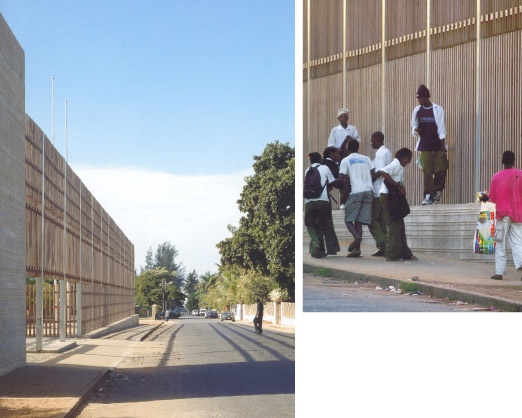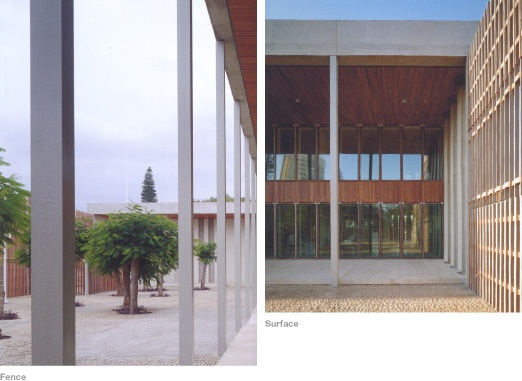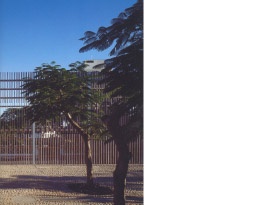

The Dutch embassy in Maputo, capital of Mozambique, stands on a relatively small lot on the outskirts of the city center. The surrounding architecture is modest, with the exception of a spectacular concrete church Santo António da Palona (1962) by architect Craviero Lopes.
Located in a residential neighborhood where most houses occupy the middle of their lots, leaving the grounds around them more or less undefined, architects Felix Claus and Kees Kaan decided to counter this trend, and optimize the use of the embassy lot by pushing their building into the north-west corner. This left the remaining open space sufficiently large to accommodate a landscape design to complement the embassy building.

Three items had to be decided
upon: fence, floor and
vegetation.

Fence
At first the open space defined by the L-shaped embassy building was designated as a garden. For security reasons fencing of at least 7 feet was required. However the proportions of the space to its boundaries didn’t feel right. By extending the fence almost to roof level, the architects made what would have become a small garden next to a big building into a large courtyard integrated with the structure. The 20 feet tall separation with the outer world derives its scale from a division in three bands of different transparency.
Surface
The courtyard meets the building on two sides at a double story high portico. The smooth white concrete surface of the porch contrasts with the bumpy stone pattern of the open space, just one step below. A geometric arrangement of pink pebble stones, found locally, cast in concrete would be prohibitively expensive to employ anywhere else but in countries like Mozambique. A long metal drain in the middle emphasizes the elongated character of the patio.
 |
Trees
In the stony surface mature Royal poincianas (Delonix regia) have been planted. These trees, originally from Madagascar, can be found all over the city. In the local climate they grow rapidly so their broad canopies will soon cover the patio with a green roof of feathery leaves where the sunlight shimmers through. An abundance of orange colored flowers provides the space with a distinctive couleur locale a couple of weeks after the dry season. |
Client
Ministry of Foreign Affairs
Credits
Claus en Kaan
Architects